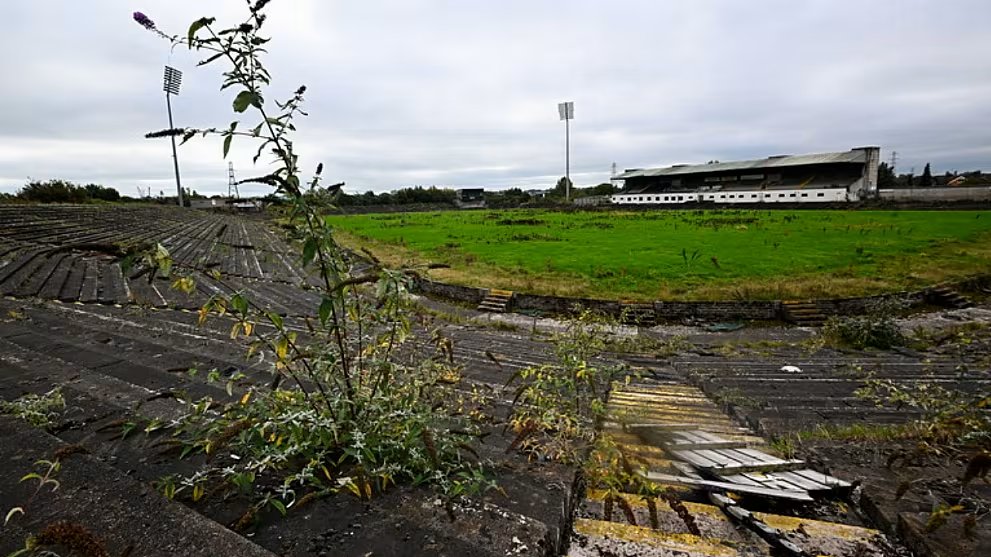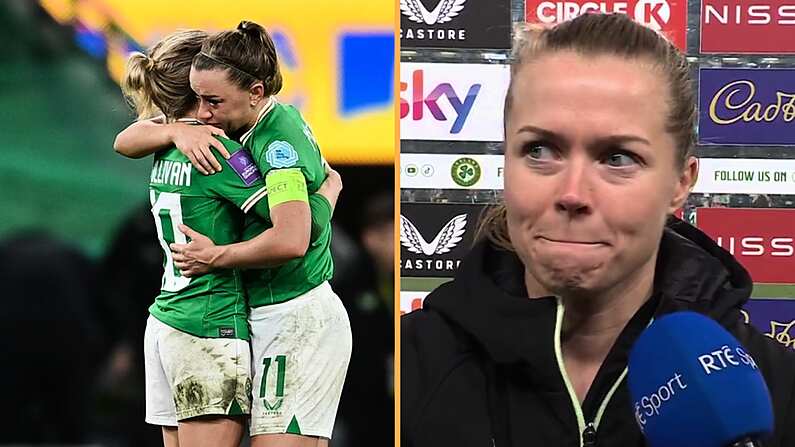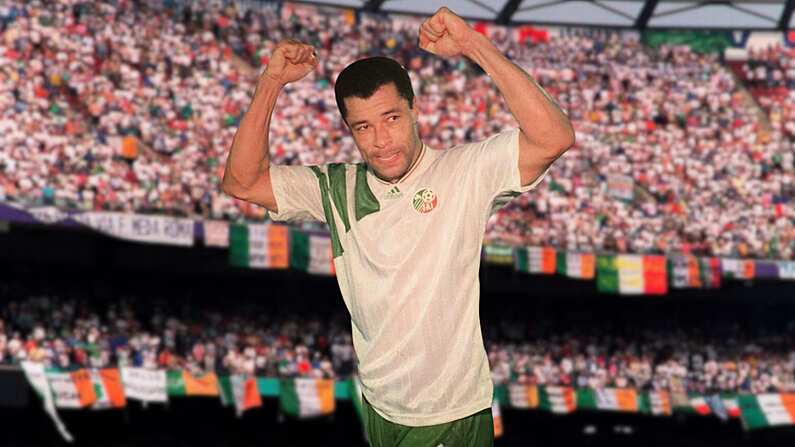Take a stroll down Sandy Row toward Blythe Street in Belfast and you will come across a poignant mural to one of the city's greatest ever sons, George Best.
It shows the legendary footballer between the crest of the club he was best associated with, Manchester United, and the crest of the IFA, Northern Ireland's football governing body.
But, between the two icons, Best himself is not decked out in a Northern Irish kit, as you may expect from a mural in Belfast. Instead, he is depicted in the red and white of United.

The George Best mural on Blythe Street in Belfast
It may not be that much of a surprising choice.
After all, by far the most iconic spell of George Best's career came in Manchester, where he is still hailed as one of United's greatest ever players. A Ballon d'Or winner in the season which saw the club win the European Cup for the first time, Best formed part of the immortal "Holy Trinity" alongside Bobby Charlton and Denis Law during the 1960s.
But one could be understandably surprised that a mural of Best in his own home city would not see him proudly adorning the green of his national team.
The truth is that Best's international career was simply not one of great note. For a player of his quality, only 37 caps and nine goals for Northern Ireland is a surprisingly low tally, even if his career did end earlier than most.
Perhaps the biggest thing which works against Best's international legacy was that his peak predated the era of Northern Ireland qualifying for major tournaments. His final appearance for his country came five years before the North's first major tournament appearance, at the 1982 World Cup in Spain.
That is not to say that the teams he played on in the 1960s and 70s were not impressively stacked with talent. Some of the greatest ever players from this island played for Northern Ireland during that period - Pat Jennings, Martin O'Neill, Gerry Amstrong and more saw their international careers overlap at some point with Best's.
But the Northern Irish team was not quite strong enough to get to major tournaments - nor was the team south of the border, despite boasting similarly impressive talent through the likes of John Giles, Liam Brady, Don Givens, et al.
One doesn't need to stretch too far to suggest that the combined abilities of both squads might have been enough to reach some of those they narrowly missed out on - and George Best was among those who pushed hard for the two teams to join together to form an all-Ireland football team.
READ HERE: Ranking The Nine Official World Cup Video Games
READ HERE: Quiz: Name Every Ireland Player To Feature Under Stephen Kenny
What George Best thought of an all-Ireland football team
In the early 1970s, the IFA and FAI came surprisingly close to green-lighting an all-Ireland team. One of those at the centre of the push to unify the two associations was George Best, who said at the time:
I've talked to several players from the South and they all want to see a full Irish team.
I know the Northern Ireland players think the same way.
It's hard not to get carried away thinking of the potential of the combined might of the Northern Ireland and Republic of Ireland teams in the 1970s but, ultimately, those talks quickly died down after trouble at the inter-association Blaxnit Cup final in 1971.
There was one outing for an all-Ireland team in 1973 with the "Shamrock Rovers All-Ireland XI" taking on Brazil at Lansdowne Road (Best was not involved that day). 50 years later, it is still the closest we've gotten to joining the two teams together.

3 July 1973; The Shamrock Rovers Ireland XI team. Back row, from left, Miah Dennehy, Nottingham Forest, David Craig, Newcastle United, Paddy Mulligan, Crystal Palace, Martin O'Neill, Nottingham Forest, Derek Dougan, Wolverhampton Wanderers, Alan Hunter, Ipswich Town and Liam O'Kane, Nottingham Forest. Front row, from left, Bryan Hamilton, Ipswich Town, Pat Jennings, Tottenham Hotspur, Tommy Carroll, Birmingham City, John Giles, Leeds United, Don Givens, Queens Park Rangers, Terry Conroy, Stoke City, and Mick Martin, Manchester United. Friendly International, Shamrock Rovers Ireland XI v Brazil, Lansdowne Road, Dublin. Picture credit; Connolly Collection / SPORTSFILE
But Best did not give up on his dream of seeing the two teams becoming one. In an interview conducted mere months before his untimely death (which occurred 18 years ago this Saturday), Best once again reiterated his desire to see the entire island playing for one team.
I’ve always thought that at any given time both the Republic and Northern Ireland have had some great world-class players.
I just believe in trying something. If it doesn’t work, at least you’ve tried. I still hope that in my lifetime it happens. Why not have a go at it? See what it’s like.
11 years after Best's death, both teams from this island would play in the same international tournament for the first time, with both the Northern and Republic teams reaching the last 16 of EURO 2016.
Other than the odd resurfacing of an all-Ireland football discussion, talk on the subject has mostly gone quiet in recent years. There is, of course, an occasional bout of outrage or debate when players born in Northern Ireland declare for the Republic. Three such players (Shane Duffy, James McClean, and Mark Sykes) all played in Tuesday's Republic of Ireland v New Zealand friendly.
When you look back over George Best's international legacy, it is probably his stance on an all-Ireland team which stands out the most - except, perhaps, his iconic "goal but not a goal" past Gordon Banks.
Best's icon status and superhuman footballing ability allowed him to be appreciated and viewed beyond sectarian terms, and the fact that his push for an all-Ireland team came at the height of the Troubles only makes it more impactful from a social perspective.
Given the collective struggles on both sides of the border in recent years, it is tempting to imagine what a combined team would look like - but it is even more enticing if one imagines the mid-to-late-1970s era.
John Giles and Liam Brady pulling the strings with the likes of Don Givens and Frank Stapleton up top, and Pat Jennings holding down the fort at the back?
And, the icing on the cake - the very Best, George himself.












